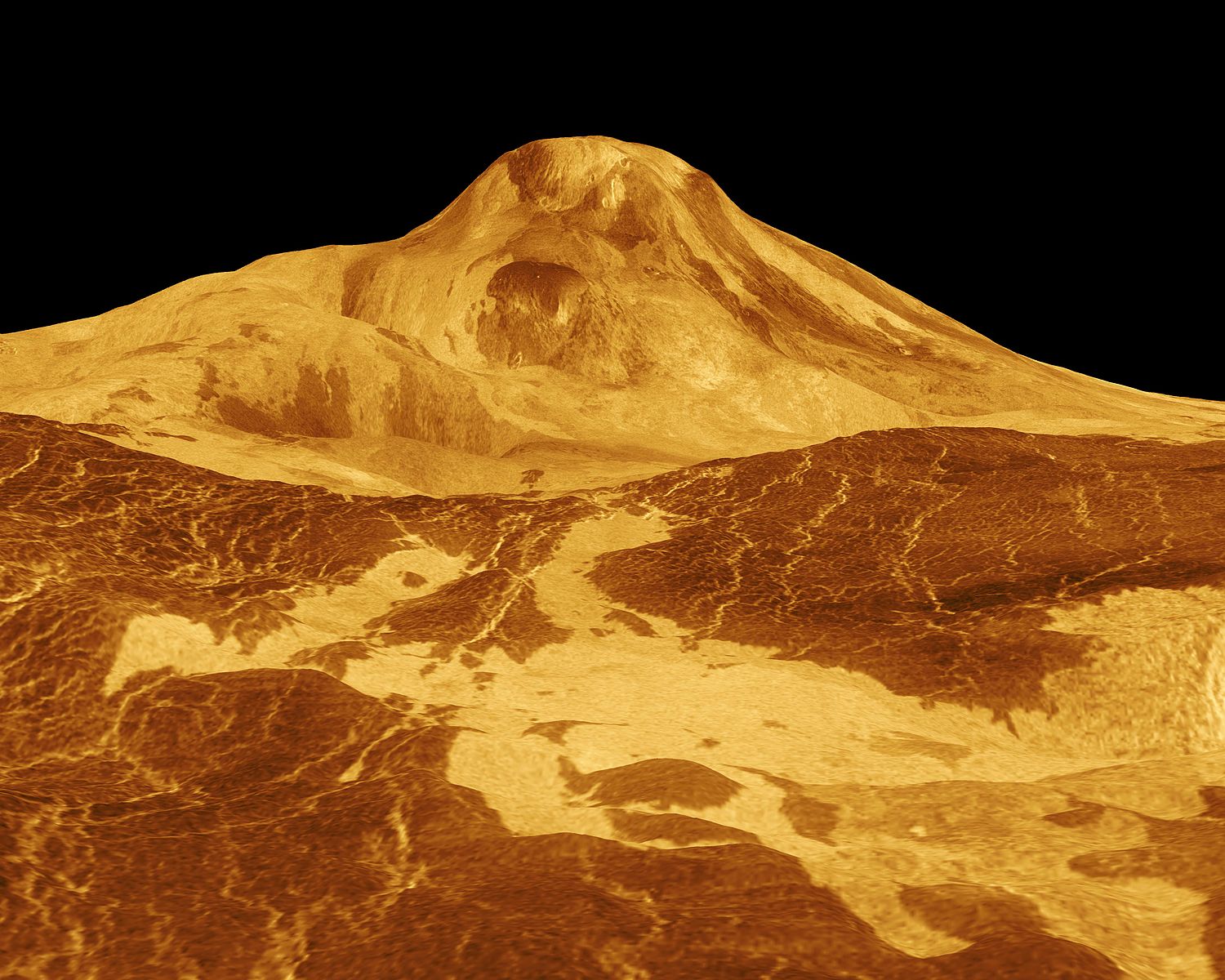 Perspective View of Maat Mons, a Potentially Active Volcano on Venus. Credit: NASA/JPL / Wikimedia Commons / Public Domain
Perspective View of Maat Mons, a Potentially Active Volcano on Venus. Credit: NASA/JPL / Wikimedia Commons / Public DomainA recent scientific study has revealed the detection of potentially active volcanoes on the planet Venus using data gathered by NASA’s Magellan spacecraft in the early 1990s.
The discovery was announced on March 15 in a paper published by researchers who observed changes in a vent located near Maat Mons, one of the largest volcanoes on Venus.
Robert Herrick, a researcher at the Geophysical Institute of the University of Alaska Fairbanks, stated at the 54th Lunar and Planetary Science Conference (LPSC) held in Texas and virtually, that the discovery was made in the most probable location for new volcanic activity.
The team of scientists analyzed the data in great detail and confirmed the presence of volcanic activity on the planet.
Magellan spacecraft took images between 1990 and 1992
Between 1990 and 1992, NASA’s Magellan spacecraft employed synthetic aperture radar (SAR) to capture detailed surface images of Venus. The SAR technology provided resolution ranging from 100 to 300 meters.
The spacecraft was in a highly elliptical orbit, taking overlapping swaths of data during its descending passes. Each surface location was imaged once per sidereal day as Venus rotated.
Images were obtained over sets of three sidereal days, which were referred to as cycles. Cycle 1 provided coverage of around 84% of the planet using east-looking SAR images.
Cycle 2 filled gaps from Cycle 1 and covered a further 35% of the planet using west-looking SAR.
During Cycle 3, approximately 15% of Venus was imaged again using east-looking SAR at an incidence angle that differed by around 20° from that used in Cycle 1.
Roughly 8% of the planet was imaged during all three cycles, providing a total of around 42% of the global surface area captured two or more times.
Analysis of two images
EVIDENCE OF ACTIVE VOLCANO OBSERVED ON PLANET VENUS
NASA reveals that after studying over 30 year archival radar images taken by the Magellan mission, they have observed direct geological evidence and signs of activity of an active volcano on the surface of Earth's twin planet pic.twitter.com/PXcb4oQtH5
— Manila Bulletin News (@manilabulletin) March 17, 2023
The study examined two Magellan spacecraft images captured eight months apart in 1991, revealing significant changes in a volcanic vent on the surface of Venus.
The scientists observed that the vent, measuring 0.7 square miles (2 square kilometers), had grown considerably larger, expanding to approximately 1.5 square miles (4 square km) over the eight-month period.
Furthermore, the shape of the vent had transformed significantly from a circular form in the initial image to a kidney-shaped structure with a dark interior in the second image. These changes provide conclusive evidence of a volcanic eruption on the surface of Venus.
Robert Herrick presented these findings during his presentation at the Lunar and Planetary Science Conference (LPSC). He further explained that the dark patch observed in the second image is likely a lava lake filling the vent to its rim.
The confirmation process of volcanoes on Venus
Robert Herrick, a researcher at the University of Alaska Fairbanks Geophysical Institute, teamed up with Scott Hensley, a project scientist for two of NASA’s upcoming Venus missions, to confirm the presence of volcanic activity on Venus.
Hensley expressed cautious optimism and excitement upon reviewing the images, as previous attempts to identify similar changes in Venusian images had failed to yield definitive results.
Moreover, Hensley acknowledged that variations in lighting and spacecraft angles could make it challenging to differentiate between changes resulting from volcanic activity and other factors.
For the first time, scientists have found direct evidences of active volcanism on Venus. Analyzing two of Magellan's images taken 8 months apart in 1991, they found that a vent located north of Maat Mons, one of the largest volcanoes on Venus, almost doubles …. pic.twitter.com/wl06Ww6iSF
— Nerdium belongs to the Artemis era🇺🇦 (@thenerdium) March 16, 2023
To eliminate the possibility that changes in spacecraft angles were responsible for the observed changes, Hensley conducted simulations using Magellan data about the vent’s shape, depth, and other characteristics.
These simulations produced hundreds of volcanic vents, of which 60 are outlined in the paper published on Wednesday in the journal Science.

 1 year ago
85
1 year ago
85











 English (US)
English (US)